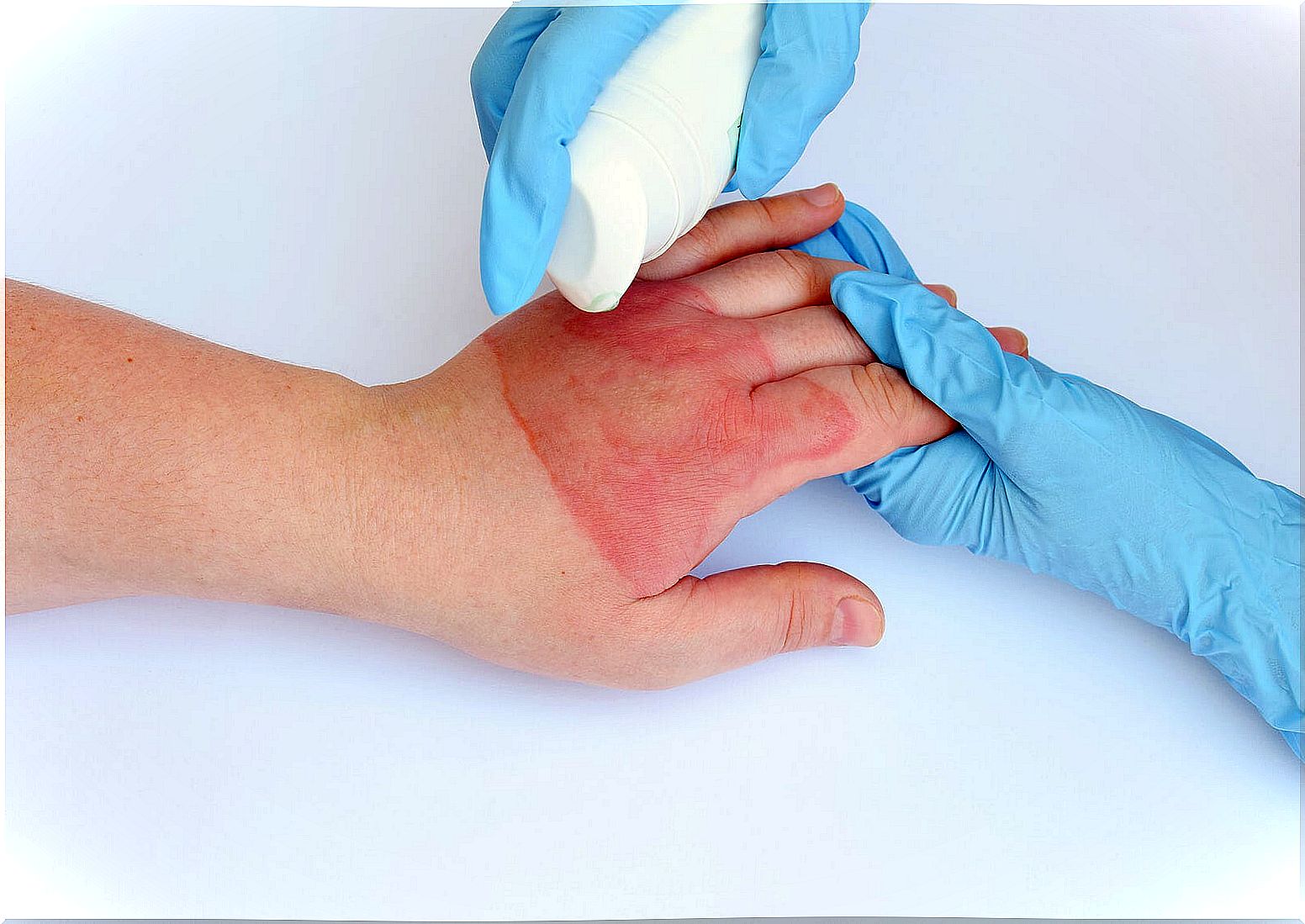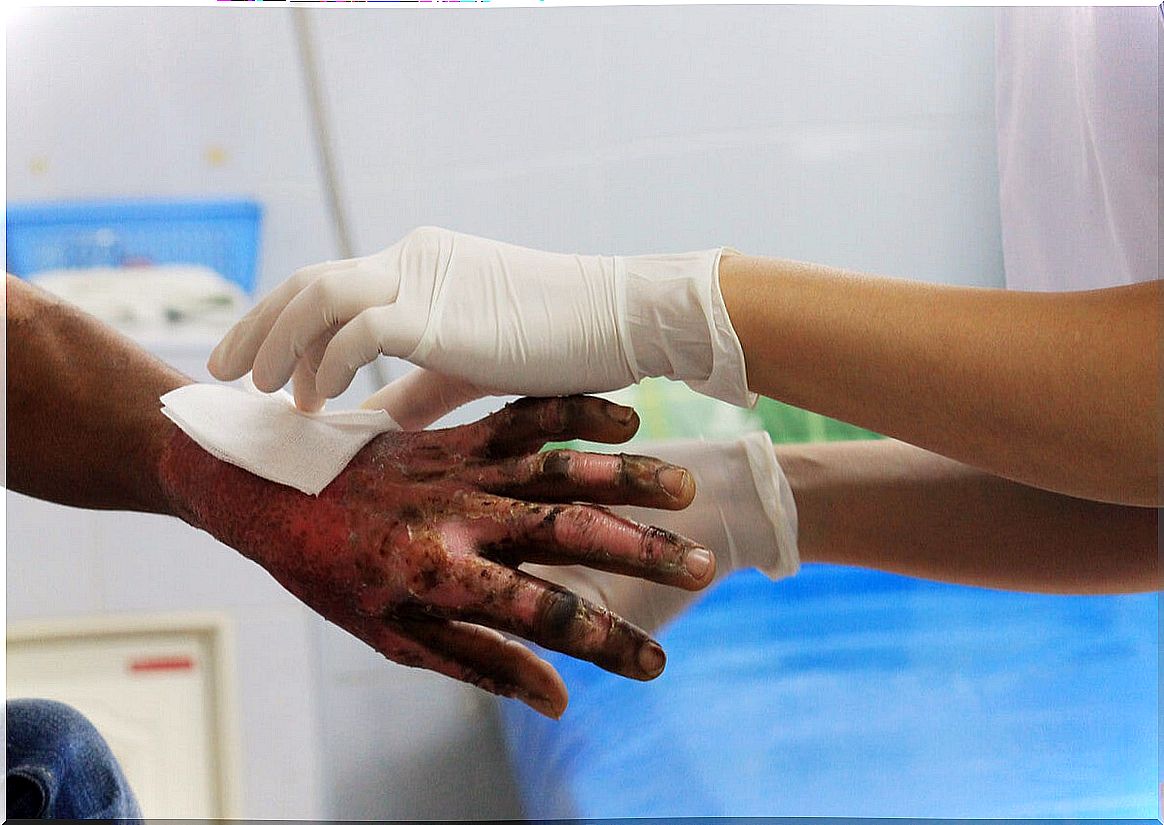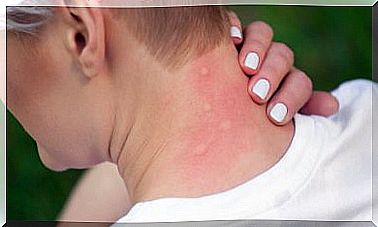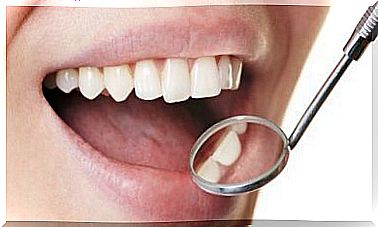Use Of The Rule Of 9 In Body Burns
The rule of 9 in body burns is very useful to calculate the percentage of the body that is affected and thus be able to initiate adequate fluid replacement . Learn more about her below.

Burns are injuries to the skin or other organs caused by physical, chemical or biological agents that cause the destruction of cells. The rule of 9 is a way of classifying body burns; It is used to assess the severity and extent of the injury.
The most common cause of burns is not fire, but contact with hot water and steam. According to data provided by the Centers for Disease Control and Prevention (CDC), scalds occur in up to 58% of burn patients.
The treatment of patients with this type of injury is not easy, due to the many complications that can occur. For this reason, doctors use different classifications in which the extent and depth of burns are evaluated.
What is the rule of 9?
One of the classifications of burns best known by the general population is the one that divides them into 3 different degrees, according to their depth. In medical practice, this division must be complemented with other variables that influence severity, which is why the rule of 9 or Wallace’s rule appeared .
It is a way of classifying burns according to the percentage of affected body surface. Generally speaking, it will divide the body into different portions; each one will have a value of 9% or will be a multiple of 9.
The authors of this rule were Pulaski and Tennison in 1947. However, Wallace published it in 1951, which is why it is named after him.
To determine the extent of the burns, the affected surface should be observed and an approximate calculation of it. Despite not being a precision method, it is used in hospitals around the world and is essential to establish treatment during the first hours.

How is the body divided in the rule of 9?
As stated, the rule of 9 divides the human body into regions that are equal to 9% or multiples of 9. In this way, remembering the body division is straightforward and a very thorough examination would not be required to determine the total area affected.
In this sense, the percentages equivalent to the different areas of the body are the following:
- Head: 9% divided into 3% face, 3% neck and 3% scalp.
- Thorax: 18% divided into 9% the anterior region and 9% the posterior region.
- Abdomen: 18% divided into 9% the anterior region and 9% the lumbar region.
- Upper limbs: 9% each, divided into 4.5% in the anterior region and 4.5% in the posterior region.
- Lower limbs: 18% each divided into 9% the anterior region and 9% the posterior region, including the buttocks.
If all the percentages mentioned are added, 99% of body surface area will be obtained. The remaining 1% will be reserved for special areas, and can be used when the genitalia or the palms of the hands are affected.
When it’s used?
The rule of 9 is used by health personnel in emergency rooms to determine the amount of fluids to administer to burn patients. Burns are injuries in which there is a great loss of body fluids, so that people can go into shock very quickly.
Fluid replacement in burn patients is done through the Parkland formula. It consists of multiplying 4 cubic centimeters of lactated ringer’s solution by the weight of the patient and the burned body surface.
The result will be the total amount of fluids that should be administered to the patient in the first 24 hours after the event occurred. Importantly, the rule of 9 is only used for adults with second and third degree burns.
In the kids
The rule of 9 can only be applied to burns in children over 14 years of age, since the distribution of their body surface is similar to that found in adults. However, it is necessary to modify the percentages mentioned above in the smaller ones.
They have a larger head and shorter limbs in relation to the body, which translates into significant changes in the affected surface. For this there is a tool called the Lund and Browder table, which adjusts the percentages according to age.
On the other hand, studies show that the palm rule is also useful to determine the burned surface in pediatric patients. This rule establishes that the palm of the child’s hand, including the extended fingers, represents 1% of the body surface.

Severity of burns
The severity of the burns suffered by a patient will depend on both the extent and the depth. According to multiple studies, a burn has significant repercussions when it affects more than 10% of the body surface in children and more than 15% in adults.
In this sense, they can be classified as follows, according to the rule of 9:
- Mild: are all those second degree burns that affect less than 15% of the body surface in adults and less than 10% in children. Third degree burns with an extent less than 2% also fall into this range.
- Moderate: these are second-degree injuries that affect between 15% and 25% of the body in adults and between 10% and 20% in children. Third degree burns fall within this classification when they affect between 2% and 10% of the body surface.
- Severe: refers to all those second degree burns that affect more than 25% of the body surface in adults and more than 20% in children. In addition, those of 3rd degree that affect more than 10% of the body also fall within this classification.
On the other hand, it is important to note that all second or third degree burns suffered on the face, genitals or any area of the crease are considered severe regardless of their extent. This is because they are areas that have a difficult treatment and an abundant bacterial flora.
A practical and easy-to-remember rule
The rule of 9 acquires great relevance in the medical treatment of patients with multiple burns on the body. However, anyone can use it to estimate the severity of an injury and thus initiate first aid in a timely manner.
The percentage distribution is very easy to remember; it is only necessary to know that in children these percentages change due to their body distribution. The rule in question is essential to determine the liquid to be administered, so it is important that all health personnel know it.









